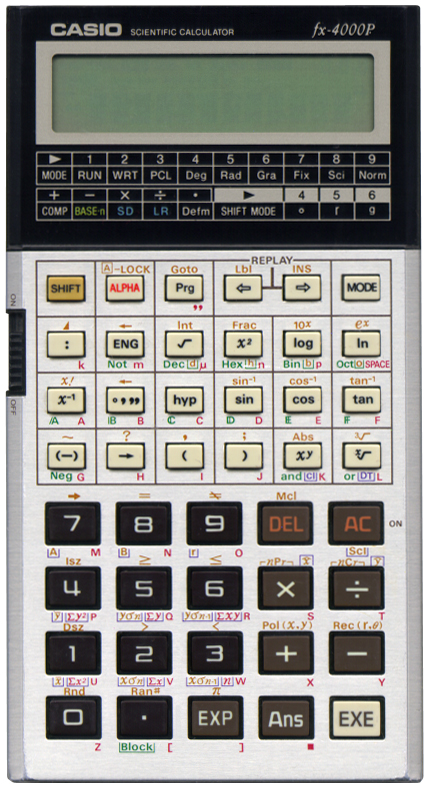
Terminated: 1989
Only now I find the CASIO fx-4000P much more elegant than the CASIO fx-7000G. I was happy to finally find one (thanks Tjeerd Mulder).
Anyway, about the calculator itself. As far as I know this is CASIO’s first (none-basic) calculator that doesn’t just store keystrokes as programs but offers something more. Something right in-between keystroke programming and a dedicated programming language, including indirect register addressing. It needs some getting used to but works beautifully when you get the hang of it. The CASIO fx-4000P has 550 programming steps.
This calculator (as do many other CASIO scientific calculators) uses one and the same key for both the constant π as well as exponents. This works as follows. When you first enter digits, the EXP key will enable you to enter the exponent, otherwise it will enter the constant π.
This calculator’s keys are different than those of many other CASIO calculators. They need to be touched only lightly to make contact. Personally I love this design and its key action.